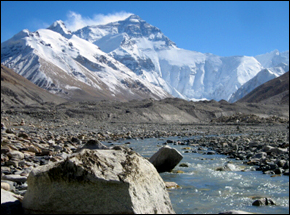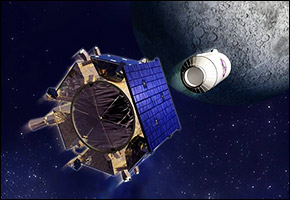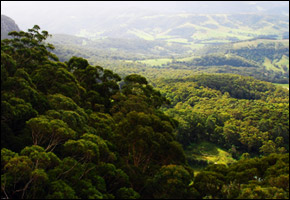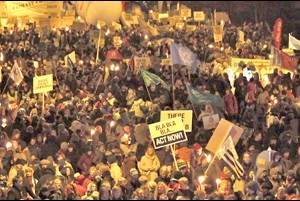Melting Glaciers Cause Potential Flooding Problems
 The WWF and UNEP, among others, are helping people adapt to climate change by reducing the risk of devastating glacial floods.
The WWF and UNEP, among others, are helping people adapt to climate change by reducing the risk of devastating glacial floods.
The emerald lakes that form at the snouts of glaciers are a beautiful sight, but rapidly melting glaciers can cause these lakes to breach their walls, inundating villages downstream. To reduce the threat, the Worldwide Fund for Nature (WWF) and the United Nations Environmental Program (UNEP) monitor and drain some of these lakes.
A partnership led by the WWF widened the outlet channel from Thorthormi Lake in Bhutan to lower the lake level by 86 cm this year, according to a WWF news release. The goal is to lower the water level five meters by 2012.
“The story of Thorthormi Lake is shaping up to be a story of successful adaptation to climate change,” said Tariq Aziz, Leader of WWF’s Living Himalayas Initiative in the press release. “However, it is also a story of the risks that climate change is building for communities and the costs and complexities of successful adaptation work.”
Glaciers constantly deposit rocks and sediment, which form ridges of loose material called moraines. A glacier with a stable position will build a terminal moraine at its bottom. When the glacier recedes, the terminal moraine holds back the lakes that develop from the melting ice. If the lakes grow too large they can breach the moraine, and flood valleys below.
That is what happened to Thorthormi Lake in 1994 — resulting in a flood that killed more than 20 people and destroyed crops, roads and hydroelectric power stations, according to the WWF. Since 2001 the lake, located 14,612 ft above sea level, has tripled in size, while its surrounding moraine dam has halved in height from erosion.
More than 100 new glacial lakes have formed in Bhutan since the last inventory was taken in 2001 by the International Center for Integrated Mountain Development.
Glacial lake outburst floods, or GLOFs as they are commonly referred to, are the target of a monitoring project run by the UNEP throughout the Himalayas and Hindu Kush range of Central Asia.
The project aims to assess the growth of glacial lakes from satellite data and install early warning systems to alert villagers to dangerous fluctuations in the water level.
The remoteness of these regions and the short research season make monitoring difficult and expensive – reasons to include funds for adaptation in any climate change treaty, according to the leader of WWF’s climate campaign.
“The speed of the changes, the dimensions of the new risks being faced by communities and the difficulties of securing lives and livelihoods against these threats makes sobering reading,” said Kim Carstensen in the WWF news release. “This gives some perspective to the calls for substantial funding for climate change adaptation in the developing world.”
Read the WWF report The Cost of Climate Change: The Story of Thorthormi Glacial Lake in Bhutan

Brett writes about agriculture, energy, infrastructure, and the politics and economics of water in the United States. He also writes the Federal Water Tap, Circle of Blue’s weekly digest of U.S. government water news. He is the winner of two Society of Environmental Journalists reporting awards, one of the top honors in American environmental journalism: first place for explanatory reporting for a series on septic system pollution in the United States(2016) and third place for beat reporting in a small market (2014). He received the Sierra Club’s Distinguished Service Award in 2018. Brett lives in Seattle, where he hikes the mountains and bakes pies. Contact Brett Walton










Leave a Reply
Want to join the discussion?Feel free to contribute!